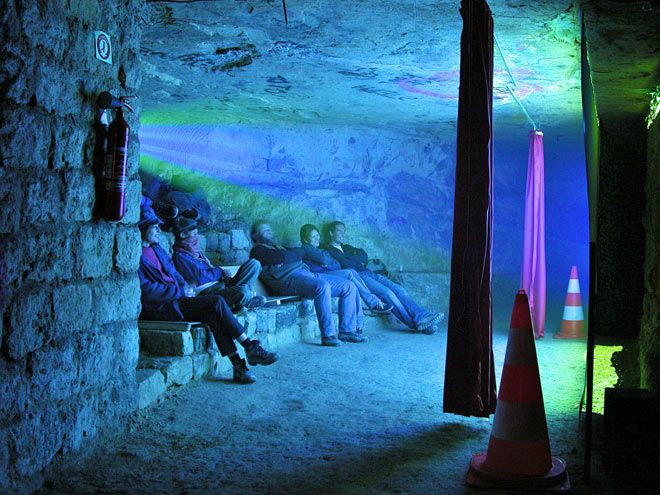UX: the New French Hacker-Artist Underground (2012)

Thirty years ago, in the dead of night, a group of six Parisian teenagers pulled off what would prove to be a fateful theft. They met up at a small café near the Eiffel Tower to review their plans—again—before heading out into the dark. Lifting a grate from the street, they descended a ladder to a tunnel, an unlit concrete passageway carrying a cable off into the void. They followed the cable to its source: the basement of the ministry of telecommunications. Horizontal bars blocked their way, but the skinny teens all managed to wedge themselves through and ascend to the building’s ground floor. There they found three key rings in the security office and a logbook indicating that the guards were on their rounds.
But the guards were nowhere to be seen. The six interlopers combed the building for hours, encountering no one, until they found what they were looking for at the bottom of a desk drawer—maps of the ministry’s citywide network of tunnels. They took one copy of each map, then returned the keys to the security office. Heaving the ministry’s grand front door ajar, they peeked outside; no police, no passersby, no problem. They exited onto the empty Avenue de Ségur and walked home as the sun rose. The mission had been so easy that one of the youths, Natacha, seriously asked herself if she had dreamed it. No, she concluded: “In a dream, it would have been more complicated.” (...)
UX’s most sensational caper (to be revealed so far, at least) was completed in 2006. A cadre spent months infiltrating the Pantheon, the grand structure in Paris that houses the remains of France’s most cherished citizens. Eight restorers built their own secret workshop in a storeroom, which they wired for electricity and Internet access and outfitted with armchairs, tools, a fridge, and a hot plate. During the course of a year, they painstakingly restored the Pantheon’s 19th- century clock, which had not chimed since the 1960s. Those in the neighborhood must have been shocked to hear the clock sound for the first time in decades: the hour, the half hour, the quarter hour.
Eight years ago, the French government didn’t know UX existed. When their exploits first trickled out into the press, the group’s members were deemed by some to be dangerous outlaws, thieves, even potential inspiration for terrorists. Still, a few officials can’t conceal their admiration. Mention UX to Sylvie Gautron of the Paris police—her specialty is monitoring the city’s old quarries—and she breaks into a wide smile. In an era when ubiquitous GPS and microprecise mapping threaten to squeeze all the mystery from our great world cities, UX seems to know, and indeed to own, a whole other, deeper, hidden layer of Paris. It claims the entire city, above- and belowground, as its canvas; its members say they can access every last government building, every narrow telecom tunnel. Does Gautron believe this? “It’s possible,” she says. “Everything they do is very intense.” (...)
